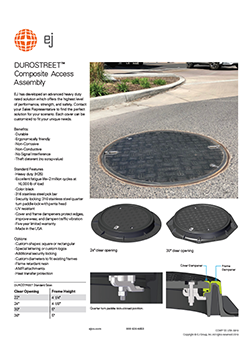Composite Solutions to Unique Problems
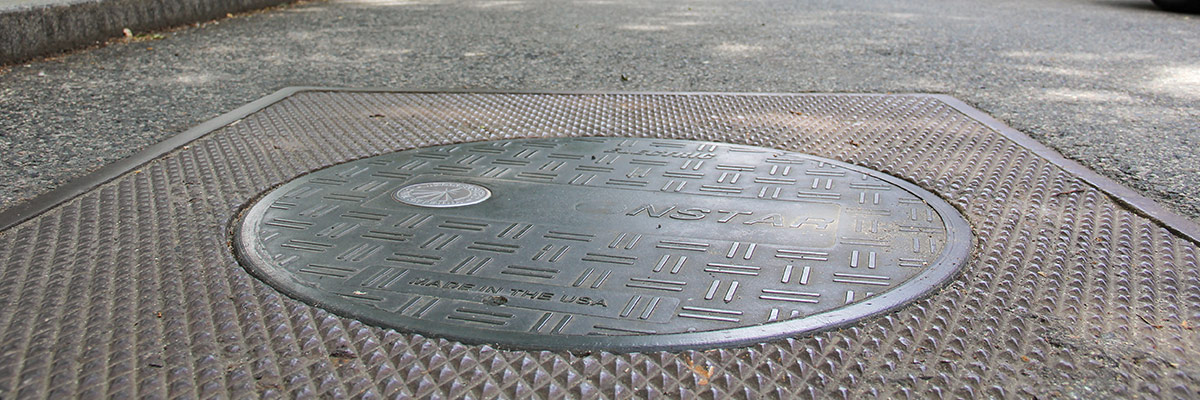
Composite materials can be engineered to meet specific and critical needs in modern cities and industries.
COMPOSITE PRODUCTS OFFER EXCEPTIONAL SOLUTIONS FOR THE MOST CHALLENGING ENVIRONMENTS.
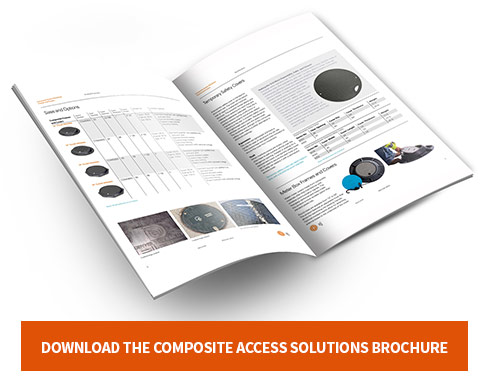
Cette information est présentement disponible en anglais. Une traduction suivra sous peu.
Composites are not new, Vincent Cooper of EJ reminds us. Several thousand years ago, Egyptians combined straw and mud to increase the strength of their bricks to compensate for a lack of wood and stronger materials.
Today’s new high performance composite materials can be engineered to meet specific and critical needs in modern cities and industries.
Cooper should know- In addition to his background in mechanical engineering, he has a PhD in material science, for which he studied reinforced composite materials. As Product Manager of Composites and Plastics, Cooper monitors the EJ global markets for opportunities.
CHALLENGES
Before joining EJ, Cooper spent four years in research and development for an aerospace company. That industry’s demand for high-performing, yet lightweight, composites often meant incorporating carbon fiber as a reinforcing agent.
Although he notes that more infrastructure professionals are discovering these new composite materials, Cooper finds that misunderstandings about composites persist.
"One of the big challenges for the composite industry is educating the engineering community and decision makers on this new type of product," he explained. "I suppose it’s because people are familiar with plastic materials, so they assume that composite manhole covers are created from plastic- the same plastic that they would find in their soda bottles."
"Of course, the composites designed for manhole covers must be very durable and must survive challenging environments, so we need to produce higher performing products beyond simple plastic," he added. "Basically, the union of the matrix resin and the reinforcing material, usually glass fiber, creates the composite."
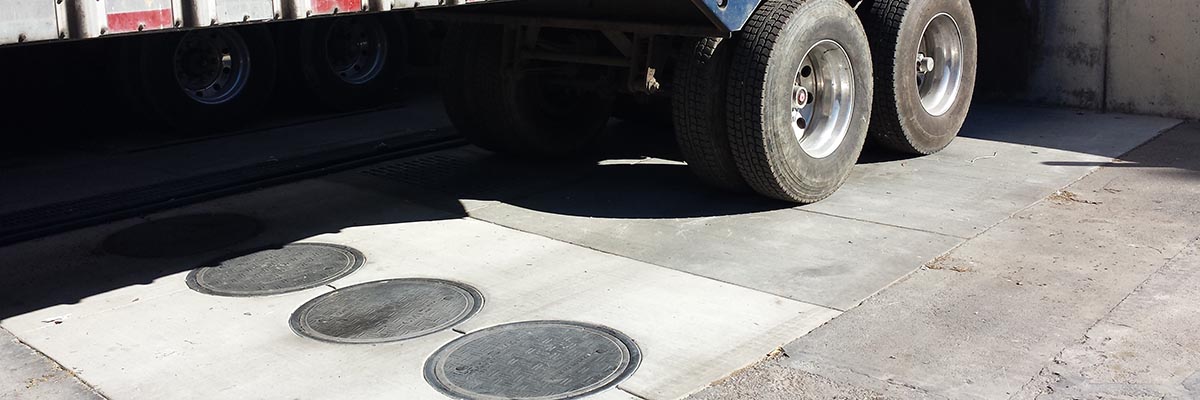 By tailoring the combination of resin and reinforcement, products can be crafted to meet a range of needs. Imagine a recipe that can be adapted by adding complimenting ingredients, except in this case the results include "recipes" that can create a manhole cover capable of bearing the weight of 18-wheelers.
By tailoring the combination of resin and reinforcement, products can be crafted to meet a range of needs. Imagine a recipe that can be adapted by adding complimenting ingredients, except in this case the results include "recipes" that can create a manhole cover capable of bearing the weight of 18-wheelers.
ERGONOMICS AND SAFETY
Still, Cooper believes two key concerns drive the expanding use of composites: ergonomics and safety.
"This means operator safety and public safety," he explained. "One reason the composite manhole covers are safer is that they have little scrap value. What we are noticing in some markets is that when cast iron manhole covers are stolen, the thieves leave a hole in the ground, which is a hazard. The composite covers are less likely to be stolen. Also, the lightweight design allows the covers to be handled safely with ergonomic removal and replacement of the cover during the installation, maintenance or inspection of underground services."
Composites bring other advantages: They will not conduct heat from steam or conduct stray voltage. These characteristics shield pedestrians from subsurface infrastructure environments. Besides being immune to rust, composite covers resist several common compounds often found in cities.
"We can tailor the composite material to ensure our product will perform in a hydrogen sulfide environment for years."
-Vincent Cooper, Product Manager, EJ
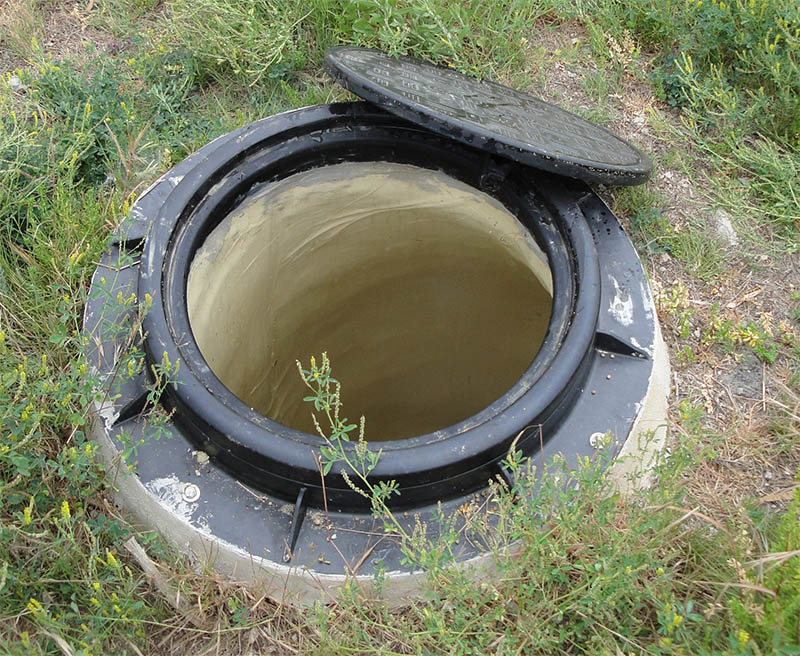 "Hydrogen sulfide (H2S) is found in many sewers across the United States," Cooper said. "We can tailor the composite material to ensure our product will perform in a hydrogen sulfide environment for years. Similarly, composites can resist salt water, making them very effective in coastal areas and in colder climates where salt is routinely applied to roads during winter months."
"Hydrogen sulfide (H2S) is found in many sewers across the United States," Cooper said. "We can tailor the composite material to ensure our product will perform in a hydrogen sulfide environment for years. Similarly, composites can resist salt water, making them very effective in coastal areas and in colder climates where salt is routinely applied to roads during winter months."
The non-metallic and hence non-sparking properties of composite makes them an attractive option for fueling stations.
MATERIAL SELECTION
The selection of any material is driven by cost and performance, and not every use of manhole covers currently demands a composite alternative. Today, composite covers generally require a greater initial investment than iron and steel manhole covers, Cooper admitted, but they shine on the balance sheet in terms of whole life cost.
"One of the big challenges for composites is the material costs," Cooper elaborated. "But the client can save money if it looks at the whole life cost: Composites will not be replaced as often."
To demonstrate the ways composites can solve customer problems, Cooper cites a long-term client EJ has in the United States.
"That large utility asked EJ for a composite product for city streets," Cooper began. "Because of stray voltage, the power utility wanted a replacement for its metallic covers. They wanted a non-conductive solution, but they also wanted the covers to be heavy, because the utility does not lock down their covers. To achieve this, we combined our iron and composite materials to create a unique hybrid solution, which has proved to be a great success."
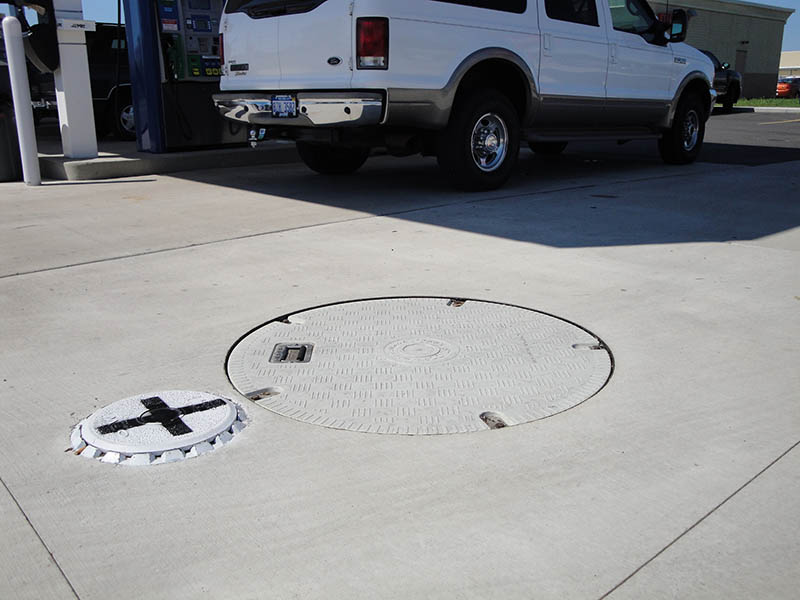
"Besides being lighter and non-conductive, composites are capable of displaying colors,” Cooper emphasized. “We can display a personalized color logo or service identification to be specific to a particular utility or client."
Wouldn’t the ancient Egyptians be jealous of that.
LEARN MORE
EJ is the leader in infrastructure access solutions in all material types including iron, aluminum, steel and composite.
Talk to an expert to find out how the innovative solutions by EJ can work for your next project.
